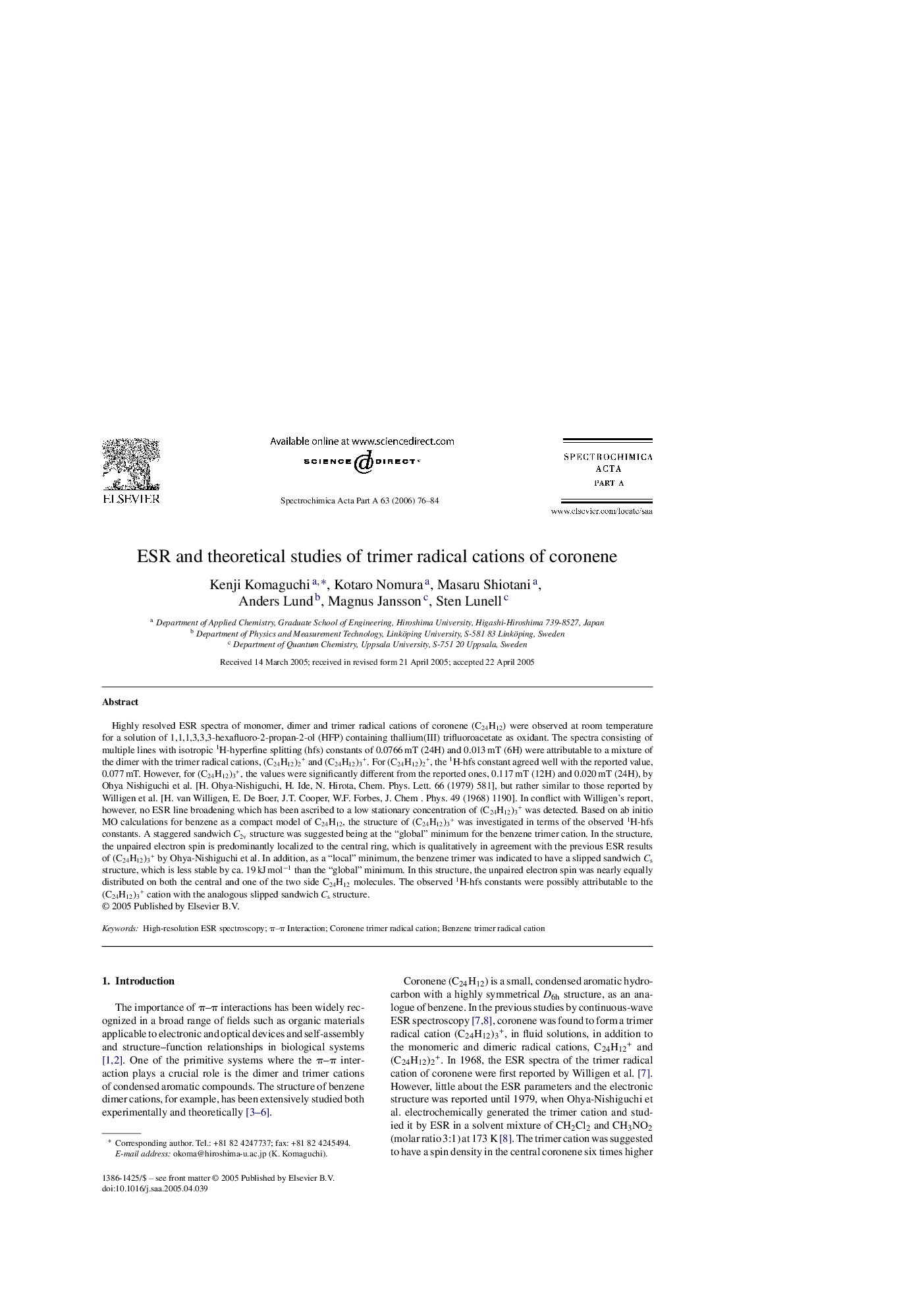| Article ID | Journal | Published Year | Pages | File Type |
|---|---|---|---|---|
| 1236894 | Spectrochimica Acta Part A: Molecular and Biomolecular Spectroscopy | 2006 | 9 Pages |
Highly resolved ESR spectra of monomer, dimer and trimer radical cations of coronene (C24H12) were observed at room temperature for a solution of 1,1,1,3,3,3-hexafluoro-2-propan-2-ol (HFP) containing thallium(III) trifluoroacetate as oxidant. The spectra consisting of multiple lines with isotropic 1H-hyperfine splitting (hfs) constants of 0.0766 mT (24H) and 0.013 mT (6H) were attributable to a mixture of the dimer with the trimer radical cations, (C24H12)2+ and (C24H12)3+. For (C24H12)2+, the 1H-hfs constant agreed well with the reported value, 0.077 mT. However, for (C24H12)3+, the values were significantly different from the reported ones, 0.117 mT (12H) and 0.020 mT (24H), by Ohya Nishiguchi et al. [H. Ohya-Nishiguchi, H. Ide, N. Hirota, Chem. Phys. Lett. 66 (1979) 581], but rather similar to those reported by Willigen et al. [H. van Willigen, E. De Boer, J.T. Cooper, W.F. Forbes, J. Chem . Phys. 49 (1968) 1190]. In conflict with Willigen's report, however, no ESR line broadening which has been ascribed to a low stationary concentration of (C24H12)3+ was detected. Based on ab initio MO calculations for benzene as a compact model of C24H12, the structure of (C24H12)3+ was investigated in terms of the observed 1H-hfs constants. A staggered sandwich C2v structure was suggested being at the “global” minimum for the benzene trimer cation. In the structure, the unpaired electron spin is predominantly localized to the central ring, which is qualitatively in agreement with the previous ESR results of (C24H12)3+ by Ohya-Nishiguchi et al. In addition, as a “local” minimum, the benzene trimer was indicated to have a slipped sandwich Cs structure, which is less stable by ca. 19 kJ mol−1 than the “global” minimum. In this structure, the unpaired electron spin was nearly equally distributed on both the central and one of the two side C24H12 molecules. The observed 1H-hfs constants were possibly attributable to the (C24H12)3+ cation with the analogous slipped sandwich Cs structure.
